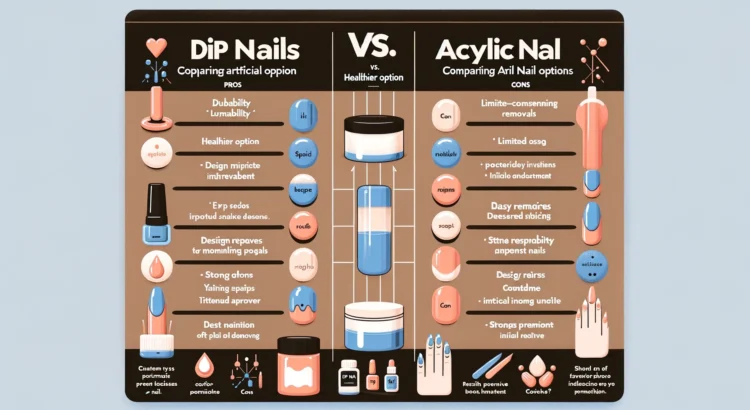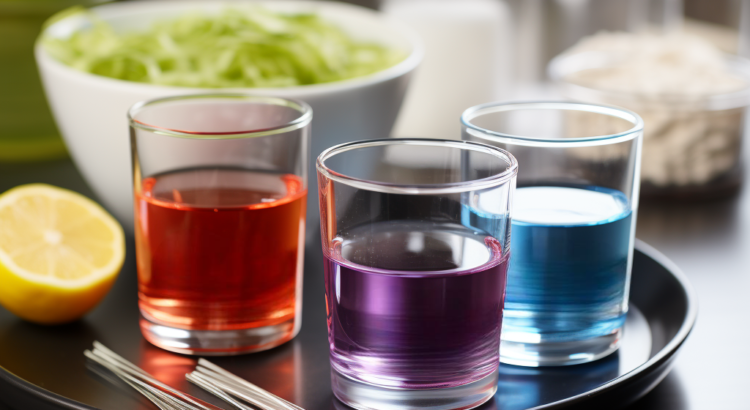Introduction
In the world of beauty and self-expression, artificial nails have become a popular choice for individuals looking to enhance their nail aesthetics. Two of the most prevalent options in the artificial nail industry are dip nails and acrylic nails. While both offer stunning results, they have their unique sets of pros and cons, catering to different customer preferences. In this article, we will delve into the key differences between dip nails and acrylic nails, exploring their impact on the industry and customer preferences, as well as their income potential for nail technicians.
Dip Nails: The Pros and Cons
Dip nails, also known as SNS (Signature Nail Systems) or powder nails, have gained immense popularity in recent years. They offer several advantages:
Pros:
- Durability: Dip nails are renowned for their durability and longevity. They can last for several weeks without chipping or fading, making them ideal for clients with active lifestyles.
- Healthier Option: Dip nails are often considered a healthier alternative to acrylics, as they do not require the use of harsh chemicals like liquid monomers. Instead, they are applied using a bonding resin and colored powder.
- Odorless Application: Unlike acrylic nails, dip nails do not emit strong odors during the application process, making them a more pleasant experience for both clients and nail technicians.
- Versatile Designs: Dip nails come in an array of colors and can be customized with various designs, including ombre, glitter, and French tips.
However, dip nails also have their drawbacks:
Cons:
- Limited Repairs: Dip nails can be challenging to repair if they break or chip. Fixing them often requires professional intervention, potentially inconveniencing clients.
- Removal Process: The removal process for dip nails involves soaking them in acetone, which can be time-consuming and potentially damaging if not done correctly.
- Initial Investment: Nail technicians may need to invest in specialized equipment and products for dip nail applications, which can be cost-prohibitive for some.
Acrylic Nails: The Pros and Cons
Acrylic nails have been a staple in the artificial nail industry for decades and continue to be a popular choice among clients.
Pros:
- Strength and Flexibility: Acrylic nails are known for their strength and flexibility, making them less prone to breakage.
- Versatility: Acrylics offer endless possibilities for nail designs, including 3D nail art, sculpted nails, and intricate designs.
- Easy Repairs: If acrylic nails break or chip, they can often be easily repaired by a skilled nail technician.
- Cost-Effective: Acrylic nails are typically more affordable than dip nails in terms of initial investment for nail technicians.
However, acrylic nails also come with their set of cons:
Cons:
- Strong Odor: The liquid monomer used in acrylic nail applications emits a strong odor that can be unpleasant for both clients and nail technicians.
- Potential Damage: Improperly applied or removed acrylic nails can damage the natural nails, leading to thinning or weakening.
- Shorter Lifespan: Acrylic nails may not last as long as dip nails, requiring more frequent salon visits for maintenance.
Customer Preference and Income Potential
Customer preferences in the artificial nail industry often depend on individual needs and priorities. Some customers prioritize durability and a healthier application process, making dip nails their preferred choice. Others may prioritize intricate designs and versatility, favoring acrylic nails.
Nail technicians who offer both dip and acrylic nail services can attract a broader clientele and increase their income potential. Offering a variety of options allows nail technicians to cater to the diverse tastes and needs of their customers, ultimately boosting their revenue.
Conclusion
The dip nails vs. acrylic nails debate continues to thrive in the artificial nail industry, with both options offering distinct advantages and drawbacks. Ultimately, customer preference plays a significant role in determining which option prevails, and nail technicians who can offer both have the opportunity to thrive in this dynamic industry. Whether it’s dip nails or acrylic nails, the choice comes down to individual tastes, lifestyles, and priorities, ensuring that the artificial nail industry remains a vibrant and evolving sector within the beauty and self-care realm.






